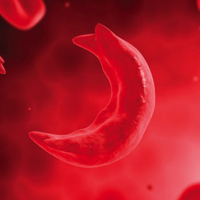Sickle cell avascular necrosis: Prevalence and clinical profiles in a tertiary hospital northwestern Nigeria

All claims expressed in this article are solely those of the authors and do not necessarily represent those of their affiliated organizations, or those of the publisher, the editors and the reviewers. Any product that may be evaluated in this article or claim that may be made by its manufacturer is not guaranteed or endorsed by the publisher.
Authors
Acute painful crises are the hallmark of Sickle Cell Anaemia (SCA). However, chronic daily pain also occurs in SCA patients with a high frequency. Avascular Necrosis (AVN) of the femur is an important cause of chronic pain and adversely affects their quality of life. The aim is to determine the prevalence of AVN among SCA patients in Zaria and describe some of its clinical and laboratory features. A cross-sectional study of 58 SCA patients in steady state. Data on gender, age, presence of radiologically diagnosed AVN, number of pain crises, blood transfusions in the previous 12 months and laboratory parameters were collated. Data were analyzed using JASP version 0.11.1.0. A critical level of α of 0.05 was set. Females constituted 40 out of 58 (69.0%) of the study participants. The median age was 23 (19.8, 28.0) years. AVN was present in 6 out of 58 (10.3%). There was no relationship between gender and AVN (FET, p=1.00, OR=0.889 95% CI 0.147, 5.359). There was no age difference between patients with AVN and those without AVN (29.92 vs 29.45, MWU=153.500, p=0.956). Patients with AVN had lower mean rank HCT levels (24.08 vs 30.13, MWU=123.500, p=0.414), higher pain episodes (31.67 vs 29.25, MWU=169.000,p=0.747), number of blood transfusions (33.42 vs 29.05, MWU=179.500, P=0.549) and platelets (34.00 vs 28.98, MWU=183.000, p=0.499) compared to those without AVN. Avascular necrosis is common among SCA patients in Zaria. These patients have more blood transfusions and bone pain episodes compared to those without AVN.
How to Cite
PAGEPress has chosen to apply the Creative Commons Attribution NonCommercial 4.0 International License (CC BY-NC 4.0) to all manuscripts to be published.

 https://doi.org/10.4081/aamr.2020.114
https://doi.org/10.4081/aamr.2020.114



